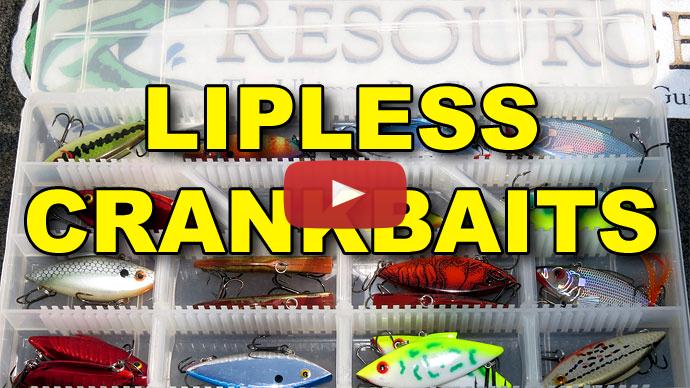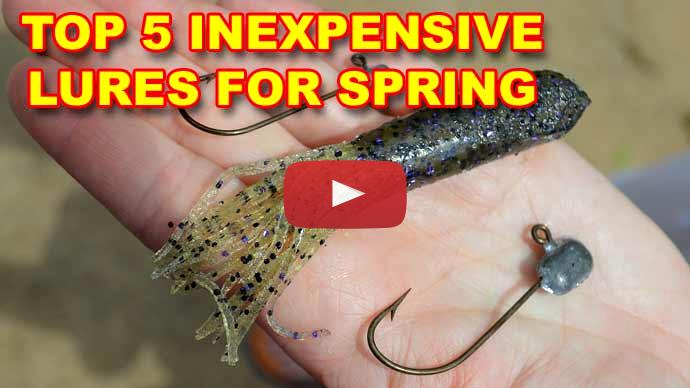Hey, guys, Bassmaster Elite Series Pro, Drew Cook here, and we're with Bass Resource. And we're going to talk about early-in-the-year cranking. So from prespawn all the way up to the spawn, what I look for, what I use, and why I use it.
So I'm going to start out with the go-to for pre-spawn fishing. And that's going to be the Spro Aruku Shad, all right. And this is a lipless crankbait. And this is something that you can fish in 2-foot of water all the way to 10-foot of water. And it all depends on your retrieve.
And so what I'm looking for with this bait is grass. Grass is what I really love to fish this in. So prespawn, you know, water temperatures, you know, very cold, anywhere from, I would say, mid-40s all the way to, you know, 63, 64-degree water, right as they're going up to spawn. And this is going to be a bait that I'm, you know, right outside of spawning pockets, big spawning flats that fish will move up to spawn. But they're already there just waiting for the water temperature to get right. You can find them really ganged up this time of year.
So what I'd like to do with this is I've got this on a Dobyns Champion XP, is a 764 crankbait rod. I really love this rod for throwing a trap. It's got enough rod where you can make a really long cast to cover a vast, you know, area. I've got a 6.2:1 to... I will throw like a 7.1:1 reel if I'm fishing really shallow.
I can go into really good detail on this line. So my line size depends on how deep I'm fishing. So I might have two of these or three of these exact same rods, exact same baits on the deck. And one will have 20-pound line on it, shallower, one will have 15-pound line on it, and then one will have 30-pound braid. And, you know, so this, I throw it on Sunline Sniper. Most of the time, I throw 18-pound, 18 or 16, that's my standard go-to.
The reason why you would want maybe a little bit lighter line would be for it to get down a little further. But what a lot of people don't realize is the little bit lighter line actually rips the grass better than a thicker line. So that 20-pound, it's going to be, you know, a little bit harder to get those small pieces of grass, almost like coot grass, the stuff that's floating on the surface that runs down on your line to catch your bait, not actually the stuff that you're ripping the bait out of.
So, I will take this bait and I'll up the hooks, especially if I'm throwing the braid. And whenever I would throw the braid, I would throw it. That's really, really thick grass and it's super shallow. And you know, and that was when I would throw the 7.1:1 reel too. You know, something a lot faster, your rod tip is going to be up, you know, maybe stop every once in a while and, you know, let it bury in the grass and really rip it out really hard. But I would do 2X Strong hooks, 4 on the front, or 2 on the front and 4 on the back is my standard. And I really like the EWG hooks from Gamakatsu for that early grass fishing because I feel like it rips out of the grass better without having like a perfect little bowl as a round bend hook would do.
Whenever I'm fishing at a little bit deeper or a little bit lighter line, I'll put the Gamakatsu G-Finesse hooks on there. The medium heavy G-Finesse hook is one of my favorites to throw all around on the actual Aruku Shad because they're so sticky. I mean, all it's got to do is touch them. And you're going to catch a lot of fish that time of year that they aren't eating it, you know, they're just swatting at it, they're just mad because it's red or whatever it may be. Some of them you are going to catch, you know, down in the throat, but a lot of them, you really want something that will just grab whatever it can and hold on to it. And that G-Finesse hook is really good about that.
I also fish these, you know, on a place that doesn't have grass, say like shell beds and things like that, that time of year, that are still setting up, you know, for somewhere for them to stage before they go up there to spawn. And whenever you're fishing in around stuff like that, I always throw, you know, 16 to 18-pound Sniper and you're really crawling it then, you know, kind of letting it tick the bottom, maybe reel it fast a couple of times, get it up and let it fall.
You'll notice a lot of times the bites you have on these baits are either after you rip it out of something and it's falling down or when you're yo-yoing it, you know, things like that. I mean, you still catch some of them just reeling it straight in, but a lot of times you have to do something different, whether it hits something, you jerk it, or, you know, clear it out of the grass, that's whenever you're going to get your bites on that.
That same time of year, prespawn, I will always have the Little John MD as well. And this is the same rod, this is a 764 Dobyns Champion XP. You know, a 6.3:1 gear ratio reel, something like that. And my line size will depend on this bait a lot as well.
So if I'm not fishing in grass or not fishing in thick grass, I'll throw this on 14-pound Sniper. That's just my go-to day-in, day-out line. And this is a great bait for, you know, fishing down the bank, you know, around wood, rock. Rock really...really excels around rock.
But what I have found, especially where I'm from which is the Southeast, we have a lot of grass lakes, this bait, you can actually, I wouldn't say jig it through there but worm it through the grass. So you're reeling this bait down into the grass and you're just kind of working it with the grass and it comes out really well. It stays clear of the grass and that's just something that a lot of those fish, that time of year, don't see. You know, a lot of times they see that, the Rat-L-Trap-style baits and, you know, just burning by them. This is something that slows down and catches a lot of fish. The flat-sided bait, you know, that time of year is, you know, a staple.
And cold water, the same temperature with this one and depth range is from... I mean, I'll throw it in 3-foot of water, you know, if I really want it to dig like a clay bank or anything like that all the way to grass that is in 15-foot of water, but the grass is, you know, come up to 6, 7-foot, you can get that bait down really good there.
Another one that will always have tied on that time of year is the Rock Crawler. The Rock Crawler has got the name Rock Crawler for a reason. This is the... Mike McClelland spent, I can't tell you how many hours designing this bait just for fishing rock. And it does just that. It's made to fish rock, but that's not the limit to it. So you've got the 50, 55, and 55 MD. So, you've got a Rock Crawler from 4 to 6-foot all the way down to 10 or 12-foot. I tend to fish that time of year 10 foot or less. So I'm going to go with the MD on that one, and like I said, perfect around rocks.
If you're fishing, you know, anywhere that you have big boulders, you know, slate banks, things like that. A lot of times this bait really shines when there's spotted bass involved. You know, early in the year, spotted bass, you know, cold water cranking, this is one of my go-tos.
And you see a lot of these are red for that time of year because that time of year, red really stands out. But you don't ever want to sleep on a shad pattern because there are still shad there. They're always eating shad, and so you have to, you know, figure out which one they're really on, and I always like to have both of them in there.
I never really fish more than 10-foot. I really like to fish grass that time of year. That grass, you know, holds heat. Rock also does the same thing. You want to find rock.
But you really have to pay attention to where the fish are going. You know, where they've been, where they're going to spawn. If you can ever find where that highway is and where the exit gets off to go to bed, that's where you want to be, right there, that intersection where it's, you know, maybe a flat, right close to deep water. You know, they're going to winter out in the deep water, and come up on that flat, and they're going to spawn way up there. They're going to be right on the edge of that grass, or right on the edge of that shell bed, or something like that. And you can really find them ganged up this time of year.
You can catch them just back-to-back to back, backcast on a stroke, you know, exact same cast. And a lot of times they're big, and a lot of times whenever they eat, they're hungry. You know, they get it really good and it can be a really fun time to catch them.
BassResource may receive a small portion of revenues if you make a purchase using a link above.



